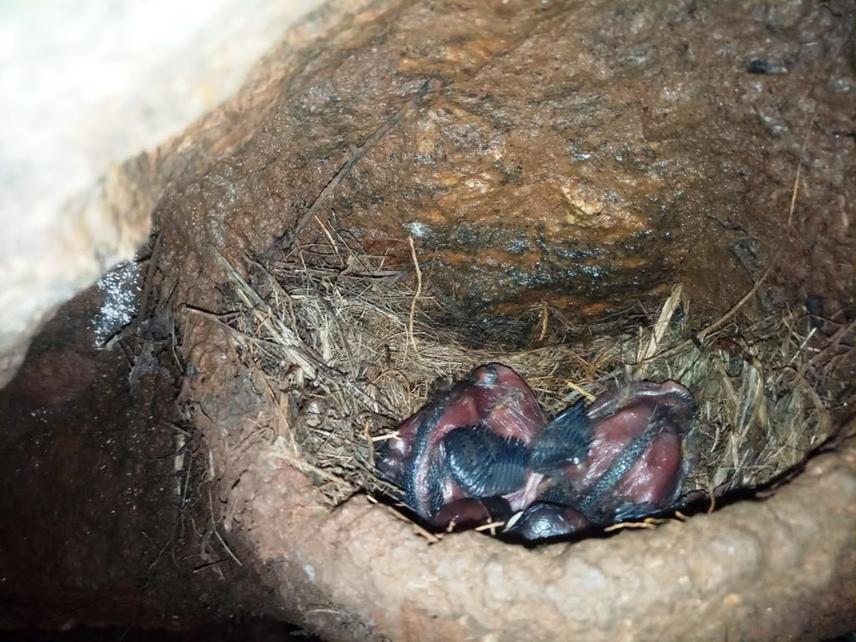Tsetagho Guilain
Other projects
17 Jan 2018
Assessing the Conservation Status of Threatened Avifauna of Mount Manengouba, Cameroon
The conservation status of many threatened and range-restricted species including the grey-necked picathartes (Picathartes oreas) are poorly know, making it difficult to develop practical conservation management and monitoring plans. This study intends to (1) improve knowledge of P. oreas populations, distribution and threats’ level around Nlonako and Mbam-Minkom mountains forests, which are important strongholds (2) develop a strategic conservation awareness/education programme in the area. This is the second step (after previous work in the Ebo forest) towards implementing a nationwide survey helpful for updating the IUCN assessment on the species, as proposed by the P. oreas action plan in 2006.

Picathartes nestlings of 4 days old inside the nest
Understanding the species ecology, behaviour and sensitivity to environmental change are important to minimise the consequences of these changes on biodiversity loss. Then, if we can predict how species will respond, we can adapt management practices (e.g. connecting protected areas) for a proper conservation. But this information is lacking for many threatened species like the Grey necked Picathartes Picathartes oreas (hereafter referred to as GNP).
Few quantitative studies on the species population status/distribution and threat level assessments have been carried out in Cameroon (Bian et al., 2006). The current distribution of the species is based on sporadic observations by BirdLife during its Important Bird Area project in 1998 (Fotso et al., 2001). In 2005, Awa II et al. (2009) determined the distribution and population size of the species in Mount Mbam-Minkom forest; attesting the survival of the species in pockets of forest, subject of intense human pressure. In 2006, a P. oreas action plan was developed, but has never been fully implemented (Bian et al., 2006).
In 2018, our first Rufford Small Grant conducted an avian survey in the Mount Manengouba area. Based on field surveys and interviews in local communities there, we recorded no evidence of the P. oreas that lastly reported there by BirdLife in 1998. This could be attributed to habitat loss and hunting ongoing there. In this regard and following the species action plan recommendations, we surveyed and documented a good population in the Ebo forest in 2019. Recent pilot study on Mounts Nlonako and Mbam-Minkom found good numbers of nests in small forest patches, facing severe human pressure.
The present grant request is geared at new surveys to assess/update the population status and distribution at sites known to harbor the species, but not spared from impacts of anthropogenic pressure, as well as engage the local communities in the conservation of this magic bird and its habitat.